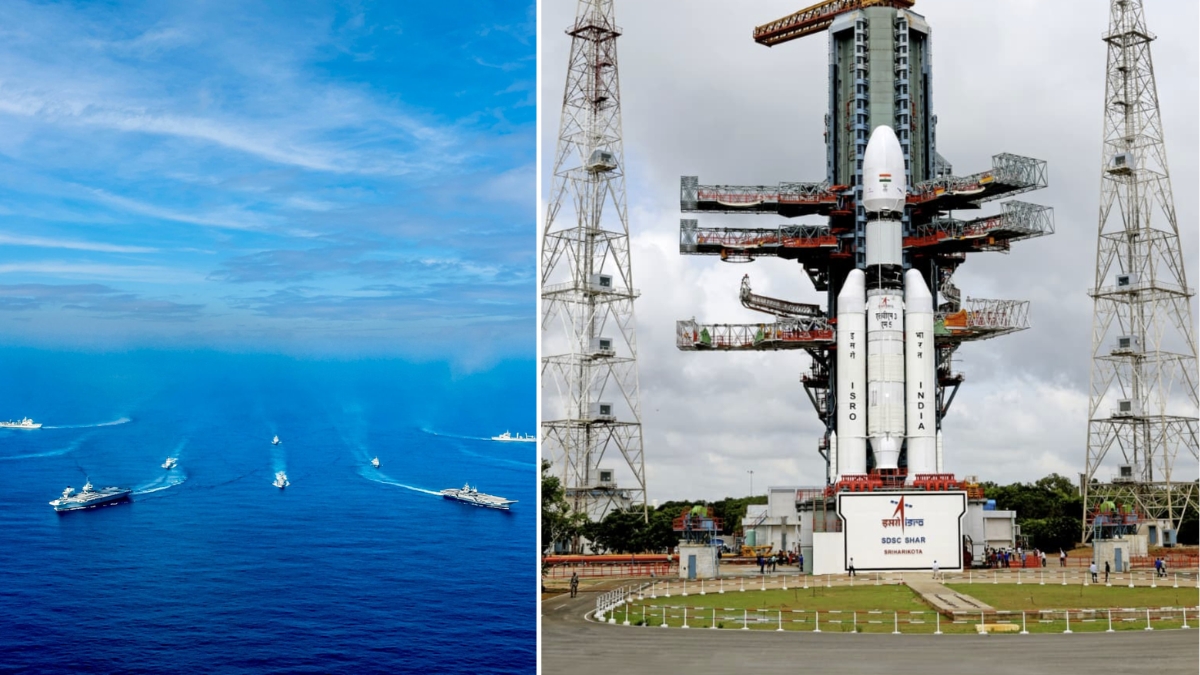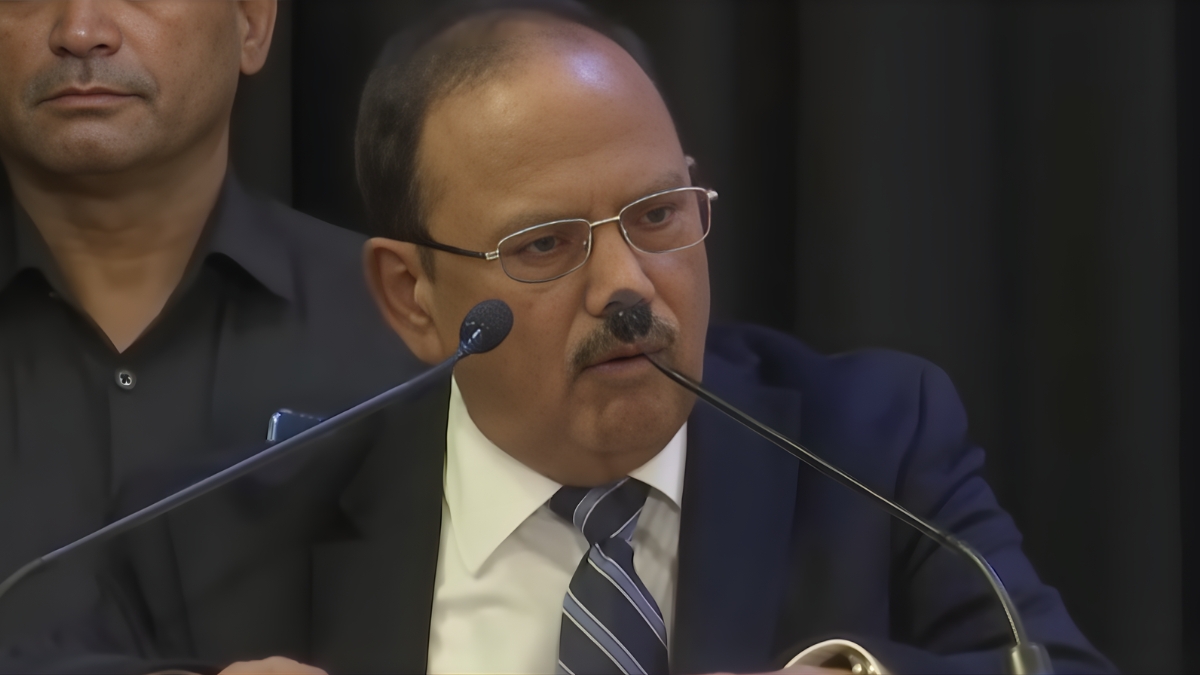ISRO Launches GSAT-7R Aboard LVM3-M5: India’s Heaviest Naval Satellite To Transform Maritime Surveillance

The indigenously designed and developed satellite is India’s heaviest communication satellite till date. Image courtesy: RNA
Starting a new chapter in the rich and glorious book of Indian Navy’s defence capabilities, Indian Space Research Organisation (ISRO) on Sunday (November 2, 2025) launched India’s heaviest satellite GSAT-7R (CMS-03), from the Satish Dhawan Space Centre (SDSC) in Sriharikota.
Dubbed as the Navy’s most advanced communication satellite, GSAT-7R weighs nearly 4,400 kilograms and is the country’s heaviest and most capable communication satellite to date, designed specifically to serve the Navy’s growing operational needs. With its launch, Aatmanirbhar Bharat would take another huge leap.

ISRO LVM3 launch: When did CMS-03 satellite lift off?
The mission lifted off at 5:26 pm today onboard the LVM3 rocket (LVM3-M6), the same heavy-lift launcher that successfully carried Chandrayaan-3 earlier this year. According to ISRO, LVM3 launch vehicle launched the CMS-03 communication satellite in its 5th operational flight (LVM3-M5).

The launch vehicle was fully assembled and integrated with the spacecraft and was moved to the Launch Pad on October 26, 2025 for further pre-launch operations.
ISRO said that CMS-03 is a multi-band communication satellite that will cover a wide oceanic region, including the entire Indian landmass and strategic maritime zones.
ISRO LVM3 GSAT-7R satellite launch video
GSAT-7R satellite: Why is a game-changer for the Navy?
In a X post, the Indian Navy described CMS-03 as its most advanced indigenously developed communication satellite, calling it a “testament to our commitment to safeguarding maritime interests with cutting-edge Indian technology.”
The GSAT-7R satellite, also called CMS-03, replaces the decade-old GSAT-7 ‘Rukmini’, launched in 2013. Over the years, ‘Rukmini’ provided crucial communication links across the Indian Ocean Region (IOR), but evolving digital warfare and surveillance demands required a next-generation upgrade.
GSAT-7R delivers that leap. It will provide real-time, encrypted communication between warships, submarines, aircraft, UAVs, and helicopters, ensuring secure data exchange and coordination even across vast maritime distances.
Some of the key capabilities of India’s heaviest satellite include multi-band communication payloads supporting voice, data, and video links; enhanced bandwidth for faster and more secure data transmission; stronger maritime domain awareness to track hostile vessels and pirate activities; high-resolution imagery and video feeds for real-time situational updates.
With these features, GSAT-7R will enable fleet commanders to make faster, data-driven operational decisions and maintain tactical superiority at sea.
How does it strengthen India’s maritime surveillance and security?
India’s maritime interests span a vast region, from the Arabian Sea to the Andaman waters. In this complex environment, communication blackouts or delayed intelligence can compromise naval operations. GSAT-7R is set to act as the Navy’s strategic communication backbone, enabling seamless coordination between surface, aerial, and underwater platforms.
Its expanded would coverage ensures that even ships operating in distant waters maintain uninterrupted, secure connectivity with command centres onshore. This capability becomes especially critical amid rising Chinese naval presence and surveillance activity across the Indian Ocean Region (IOR).
What next after GSAT-7R satellite launch?
The GSAT-7R launch would mark ISRO’s fifth operational mission in the GSAT series and showcases its expanding defence collaboration. After this, ISRO is gearing up for the LVM3-M6 mission, which would come nearly a month after the LVM3-M5 launch. ISRO is already preparing for its next major missions:
LVM3-M7 in early December featuring the CE20 cryogenic engine.
PSLV-C62, scheduled for mid to late December, marking the return to flight after the PSLV-C61 failure earlier this year.






